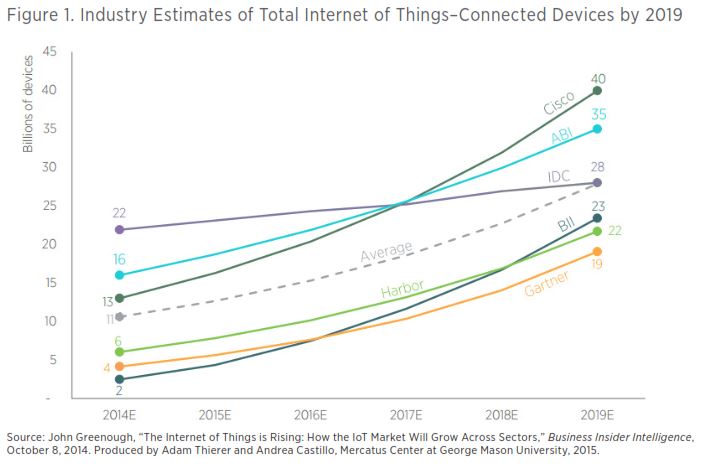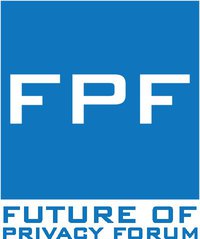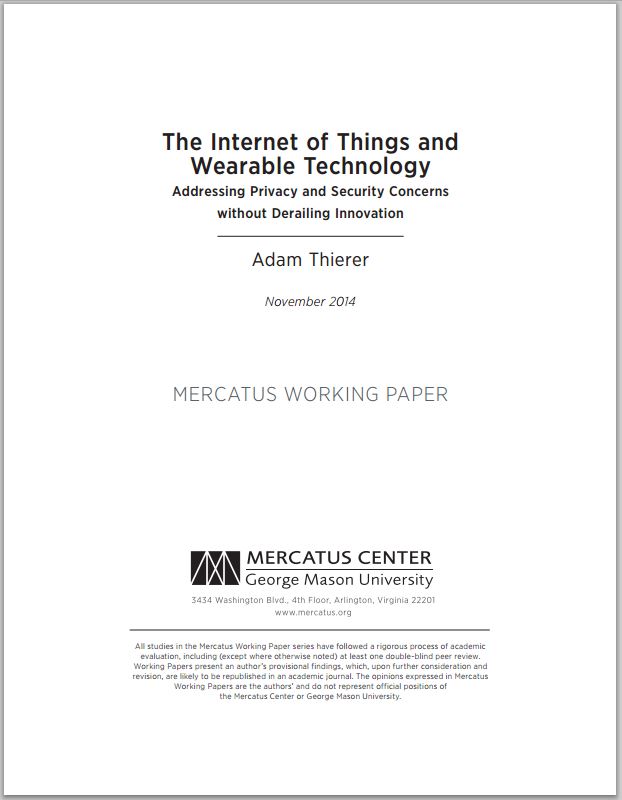On August 1, Sens. Mark Warner and Cory Gardner introduced the “Internet of Things Cybersecurity Improvement Act of 2017.” The goal of the legislation according to its sponsors is to establish “minimum security requirements for federal procurements of connected devices.” Pointing to the growing number of connected devices and their use in prior cyber-attacks, the sponsors aims to provide flexible requirements that limit the vulnerabilities of such networks. Most specifically the bill requires all new Internet of Things (IoT) devices to be patchable, free of known vulnerabilities, and rely on standard protocols. Overall the legislation attempts to increase and standardize baseline security of connected devices, while still allowing innovation in the field to remain relatively permissionless. As Ryan Hagemann[1] at the Niskanen Center states, the bill is generally perceived as a step in the right direction in promoting security while limiting the potential harms of regulation to the overall innovation in the Internet of Things.
Continue reading →
The “Internet of Things” (IoT) is already growing at a breakneck pace and is expected to continue to accelerate rapidly. In a short new paper (“Projecting the Growth and Economic Impact of the Internet of Things“) that I’ve just released with my Mercatus Center colleague Andrea Castillo, we provide a brief explanation of IoT technologies before describing the current projections of the economic and technological impacts that IoT could have on society. In addition to creating massive gains for consumers, IoT is projected to provide dramatic improvements in manufacturing, health care, energy, transportation, retail services, government, and general economic growth. Take a look at our paper if you’re interested, and you might also want to check out my 118-page law review article, “The Internet of Things and Wearable Technology: Addressing Privacy and Security Concerns without Derailing Innovation” as well as my recent congressional testimony on the policy issues surrounding the IoT.)

A new bipartisan “sense of the Senate” resolution was introduced today calling for “a national strategy for the Internet of Things to promote economic growth and consumer empowerment.” [PDF is here.] The resolution was cosponsored by U.S. Senators Deb Fischer (R-Neb.), Cory A. Booker (D-N.J.), Kelly Ayotte (R-N.H.), and Brian Schatz (D-Hawaii), who are all members of the Senate Commerce Committee, which oversees these issues. Just last month, on February 11th, the full Commerce Committee held a hearing titled “The Connected World: Examining the Internet of Things,” which examined the policy issues surrounding this exciting new space.
[Update: The U.S. Senate unanimously approved the resolution on the evening of March 24th, 2015.]
The new Senate resolution begins by stressing the many current or potential benefits associate with the Internet of Things (IoT), which, it notes, “currently connects tens of billions of devices worldwide and has the potential to generate trillions of dollars in economic opportunity.” It continues on to note how average consumers will benefit because “increased connectivity can empower consumers in nearly every aspect of [our] daily lives, including in the fields of agriculture, education, energy, healthcare, public safety, security, and transportation, to name just a few.” And then the resolution also discussed the commercial benefits, noting, “businesses across our economy can simplify logistics, cut costs in supply chains, and pass savings on to consumers because of the Internet of Things and innovations derived from it.” More generally, the Senators argue “the United States should strive to be a world leader in smart cities and smart infrastructure to ensure its citizens and businesses, in both rural and urban parts of the country, have access to the safest and most resilient communities in the world.”
In light of those amazing potential benefits, the resolution continues on to argue that while “the United States is the world leader in developing the Internet of Things technology,” an even more focused and dedicated policy vision is needed to promote continued success. “[W]ith a national strategy guiding both public and private entities,” it argues, “the United States will continue to produce breakthrough technologies and lead the world in innovation.” Continue reading →
This morning at 9:45, the Senate Committee on Commerce, Science, and Transportation is holding a full committee hearing entitled, “The Connected World: Examining the Internet of Things.” According to the Committee press release, the hearing “will focus on how devices — from home heating systems controlled by users online, to wearable devices that track health and activity with the help of Internet-based analytics — will be made smarter and more dynamic through Internet technologies. Government agencies like the Federal Trade Commission, however, are already considering possible changes to the law that could have the unintended consequence of slowing innovation.”
It is my pleasure to have been invited to testify at this hearing. I’ve long had an interest in the policy issues surrounding the Internet of Things. All my relevant research products can be found online here, including my latest law review article, “The Internet of Things and Wearable Technology Addressing Privacy and Security Concerns without Derailing Innovation.”
My testimony, which can be found on the Mercatus Center website here, begins by highlighting the three general conclusions of my work:
- First, the Internet of Things offers compelling benefits to consumers, companies, and our country’s national competitiveness that will only be achieved by adopting a flexible policy regime for this fast-moving space.
- Second, while there are formidable privacy and security challenges associated with the Internet of Things, top-down or one-size-fits-all regulation will limit innovative opportunities.
- Third, with those first two points in mind, we should seek alternative and less costly approaches to protecting privacy and security that rely on education, empowerment, and targeted enforcement of existing legal mechanisms. Long-term privacy and security protection requires a multifaceted approach incorporating many flexible solutions.
Continue reading →
Yesterday, the Federal Trade Commission (FTC) released its long-awaited report on “The Internet of Things: Privacy and Security in a Connected World.” The 55-page report is the result of a lengthy staff exploration of the issue, which kicked off with an FTC workshop on the issue that was held on November 19, 2013.
I’m still digesting all the details in the report, but I thought I’d offer a few quick thoughts on some of the major findings and recommendations from it. As I’ve noted here before, I’ve made the Internet of Things my top priority over the past year and have penned several essays about it here, as well as in a big new white paper (“The Internet of Things and Wearable Technology: Addressing Privacy and Security Concerns without Derailing Innovation”) that will be published in the Richmond Journal of Law & Technology shortly. (Also, here’s a compendium of most of what I’ve done on the issue thus far.)
I’ll begin with a few general thoughts on the FTC’s report and its overall approach to the Internet of Things and then discuss a few specific issues that I believe deserve attention. Continue reading →
 This week, the Future of Privacy Forum (FPF) released a new white paper entitled, “A Practical Privacy Paradigm for Wearables,” which I believe can help us find policy consensus regarding the privacy and security concerns associated with the Internet of Things (IoT) and wearable technologies. I’ve been monitoring IoT policy developments closely and I recently published a big working paper (“The Internet of Things and Wearable Technology: Addressing Privacy and Security Concerns without Derailing Innovation”) that will appear shortly in the Richmond Journal of Law & Technology. I have also penned several other essays on IoT issues. So, I will be relating the FPF report to some of my own work.
This week, the Future of Privacy Forum (FPF) released a new white paper entitled, “A Practical Privacy Paradigm for Wearables,” which I believe can help us find policy consensus regarding the privacy and security concerns associated with the Internet of Things (IoT) and wearable technologies. I’ve been monitoring IoT policy developments closely and I recently published a big working paper (“The Internet of Things and Wearable Technology: Addressing Privacy and Security Concerns without Derailing Innovation”) that will appear shortly in the Richmond Journal of Law & Technology. I have also penned several other essays on IoT issues. So, I will be relating the FPF report to some of my own work.
The new FPF report, which was penned by Christopher Wolf, Jules Polonetsky, and Kelsey Finch, aims to accomplish the same goal I had in my own recent paper: sketching out constructive and practical solutions to the privacy and security issues associated with the IoT and wearable tech so as not to discourage the amazing, life-enriching innovations that could flow from this space. Flexibility is the key, they argue. “Premature regulation at an early stage in wearable technological development may freeze or warp the technology before it achieves its potential, and may not be able to account for technologies still to come,” the authors note. “Given that some uses are inherently more sensitive than others, and that there may be many new uses still to come, flexibility will be critical going forward.” (p. 3)
That flexible approach is at the heart of how the FPF authors want to see Fair Information Practice Principles (FIPPs) applied in this space. The FIPPs generally include: (1) notice, (2) choice, (3) purpose specification, (4) use limitation, and (5) data minimization. The FPF authors correctly note that, Continue reading →
I’ve spent much of the past year studying the potential public policy ramifications associated with the rise of the Internet of Things (IoT). As I was preparing some notes for my Jan. 6th panel discussing on “Privacy and the IoT: Navigating Policy Issues” at this year’s 2015 CES show, I went back and collected all my writing on IoT issues so that I would have everything in one place. Thus, down below I have listed most of what I’ve done over the past year or so. Most of this writing is focused on the privacy and security implications of the Internet of Things, and wearable technologies in particular.
I plan to stay on top of these issues in 2015 and beyond because, as I noted when I spoke on a previous CES panel on these issues, the Internet of Things finds itself at the center of what we might think of a perfect storm of public policy concerns: Privacy, safety, security, intellectual property, economic / labor disruptions, automation concerns, wireless spectrum issues, technical standards, and more. When a new technology raises one or two of these policy concerns, innovators in those sectors can expect some interest and inquiries from lawmakers or regulators. But when a new technology potentially touches all of these issues, then it means innovators in that space can expect an avalanche of attention and a potential world of regulatory trouble. Moreover, it sets the stage for a grand “clash of visions” about the future of IoT technologies that will continue to intensify in coming months and years.
That’s why I’ll be monitoring developments closely in this field going forward. For now, here’s what I’ve done on this issue as I prepare to head out to Las Vegas for another CES extravaganza that promises to showcase so many exciting IoT technologies. Continue reading →
What sort of public policy vision should govern the Internet of Things? I’ve spent a lot of time thinking about that question in essays here over the past year, as well as in a new white paper (“The Internet of Things and Wearable Technology: Addressing Privacy and Security Concerns without Derailing Innovation”) that will be published in the Richmond Journal of Law & Technology early next year.
But I recently heard three policymakers articulate their recommended vision for the Internet of Things (IoT) and I found their approach so inspiring that I wanted to discuss it here in the hopes that it will become the foundation for future policy in this arena.
Last Thursday, it was my pleasure to attend a Center for Data Innovation (CDI) event on “How Can Policymakers Help Build the Internet of Things?” As the title implied, the goal of the event was to discuss how to achieve the vision of a more fully-connected world and, more specifically, how public policymakers can help facilitate that objective. It was a terrific event with many excellent panel discussions and keynote addresses.
Two of those keynotes were delivered by Senators Deb Fischer (R-Neb.) and Kelly Ayotte (R-N.H.). Below I will offer some highlights from their remarks and then relate them to the vision set forth by Federal Trade Commission (FTC) Commissioner Maureen K. Ohlhausen in some of her recent speeches. I will conclude by discussing how the Ayotte-Fischer-Ohlhausen vision can be seen as the logical extension of the Clinton Administration’s excellent 1997 Framework for Global Electronic Commerce, which proposed a similar policy paradigm for the Internet more generally. This shows how crafting policy for the IoT can and should be a nonpartisan affair. Continue reading →
 The Mercatus Center at George Mason University has just released my latest working paper, “The Internet of Things and Wearable Technology: Addressing Privacy and Security Concerns without Derailing Innovation.” The “Internet of Things” (IoT) generally refers to “smart” devices that are connected to both the Internet and other devices. Wearable technologies are IoT devices that are worn somewhere on the body and which gather data about us for various purposes. These technologies promise to usher in the next wave of Internet-enabled services and data-driven innovation. Basically, the Internet will be “baked in” to almost everything that consumers own and come into contact with.
The Mercatus Center at George Mason University has just released my latest working paper, “The Internet of Things and Wearable Technology: Addressing Privacy and Security Concerns without Derailing Innovation.” The “Internet of Things” (IoT) generally refers to “smart” devices that are connected to both the Internet and other devices. Wearable technologies are IoT devices that are worn somewhere on the body and which gather data about us for various purposes. These technologies promise to usher in the next wave of Internet-enabled services and data-driven innovation. Basically, the Internet will be “baked in” to almost everything that consumers own and come into contact with.
Some critics are worried about the privacy and security implications of the Internet of Things and wearable technology, however, and are proposing regulation to address these concerns. In my new 93-page article, I explain why preemptive, top-down regulation would derail the many life-enriching innovations that could come from these new IoT technologies. Building on a recent book of mine, I argue that “permissionless innovation,” which allows new technology to flourish and develop in a relatively unabated fashion, is the superior approach to the Internet of Things.
As I note in the paper and my earlier book, if we spend all our time living in fear of the worst-case scenarios — and basing public policies on them — then best-case scenarios can never come about. As the old saying goes: nothing ventured, nothing gained. Precautionary principle-based regulation paralyzes progress and must be avoided. We instead need to find constructive, “bottom-up” solutions to the privacy and security risks accompanying these new IoT technologies instead of top-down controls that would limit the development of life-enriching IoT innovations. Continue reading →
On Thursday, it was my great pleasure to present a draft of my forthcoming paper, “The Internet of Things & Wearable Technology: Addressing Privacy & Security Concerns without Derailing Innovation,” at a conference that took place at the Federal Communications Commission on “Regulating the Evolving Broadband Ecosystem.” The 3-day event was co-sponsored by the American Enterprise Institute and the University of Nebraska College of Law.
The 65-page working paper I presented is still going through final peer review and copyediting, but I posted a very rough first draft on SSRN for conference participants. I expect the paper to be released as a Mercatus Center working paper in October and then I hope to find a home for it in a law review. I will post the final version once it is released. [UPDATE:The final version of this working paper was released on November 19, 2014.]
In the meantime, however, I thought I would post the 46 slides I presented at the conference, which offer an overview of the nature of the Internet of Things and wearable technology, the potential economic opportunities that exist in this space, and the various privacy and security challenges that could hold this technological revolution back. I also outlined some constructive solutions to those concerns. I plan to be very active on these issues in coming months.
Continue reading →




 The Technology Liberation Front is the tech policy blog dedicated to keeping politicians' hands off the 'net and everything else related to technology.
The Technology Liberation Front is the tech policy blog dedicated to keeping politicians' hands off the 'net and everything else related to technology.